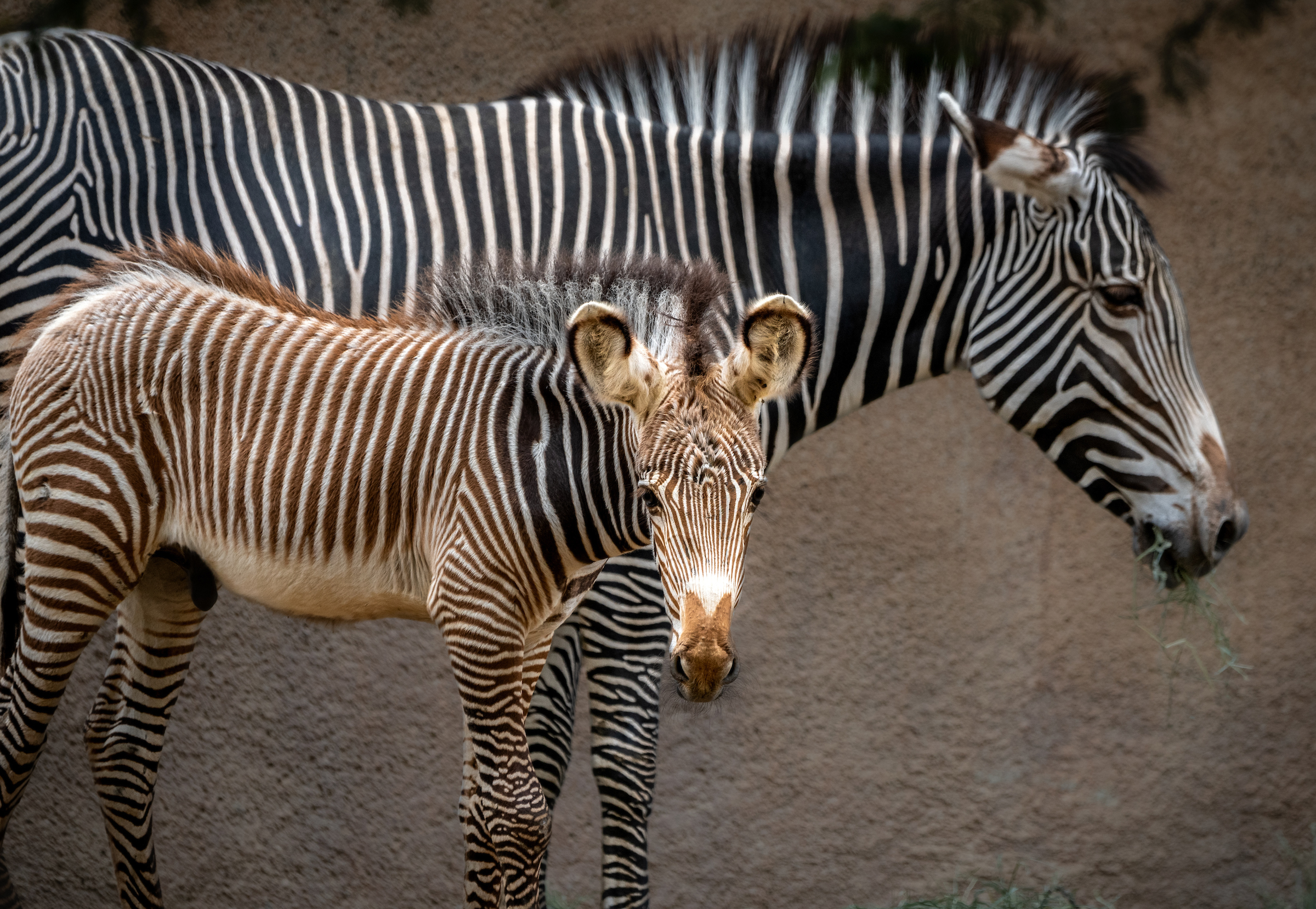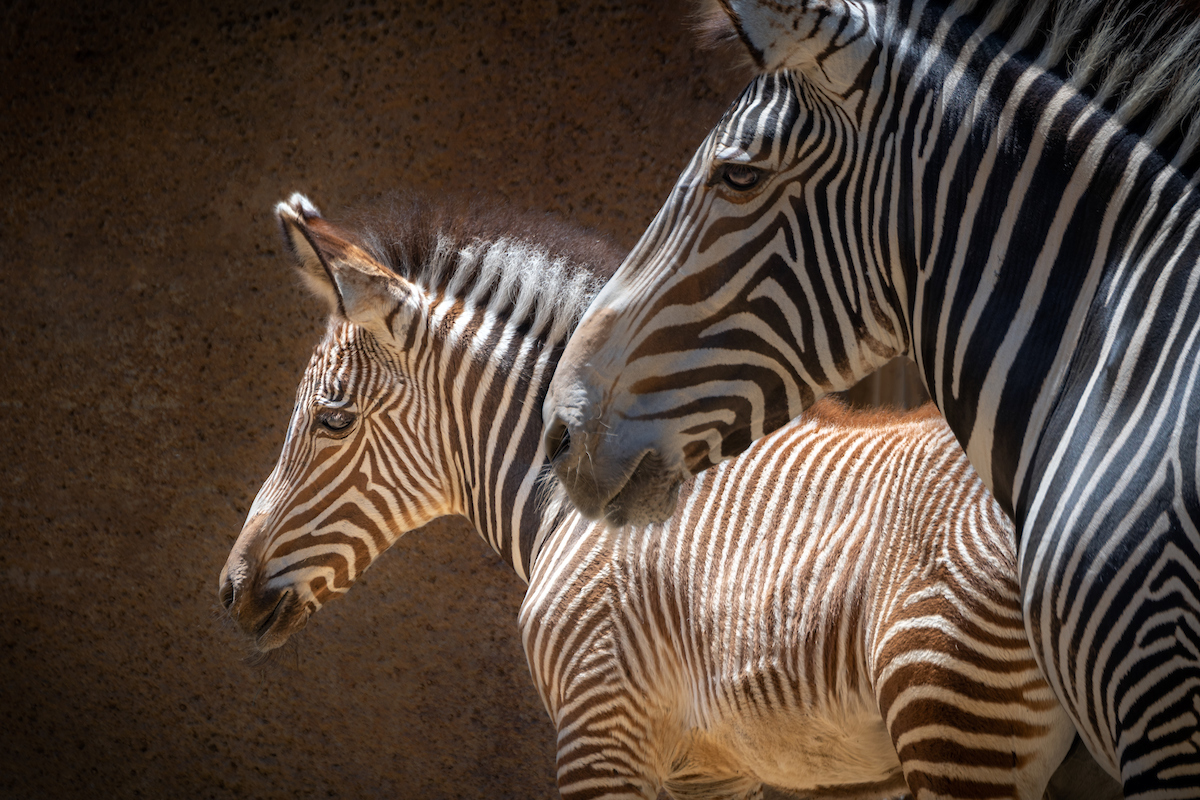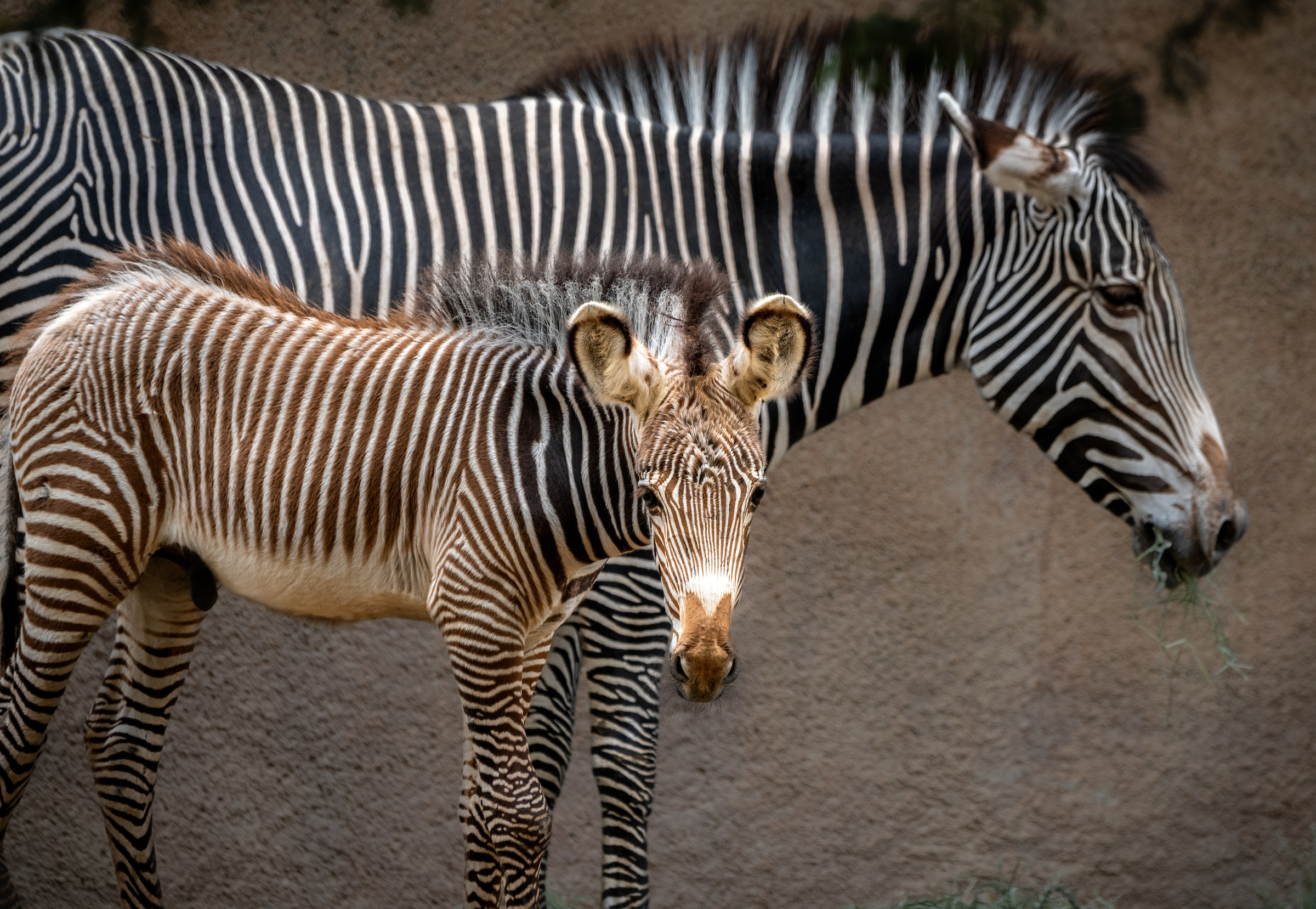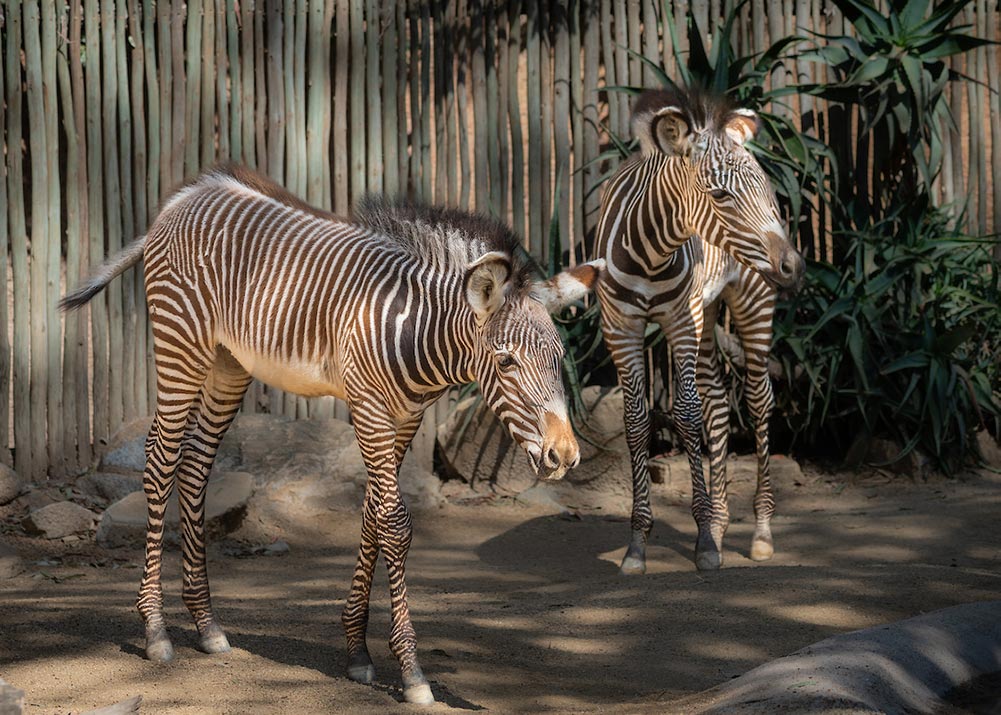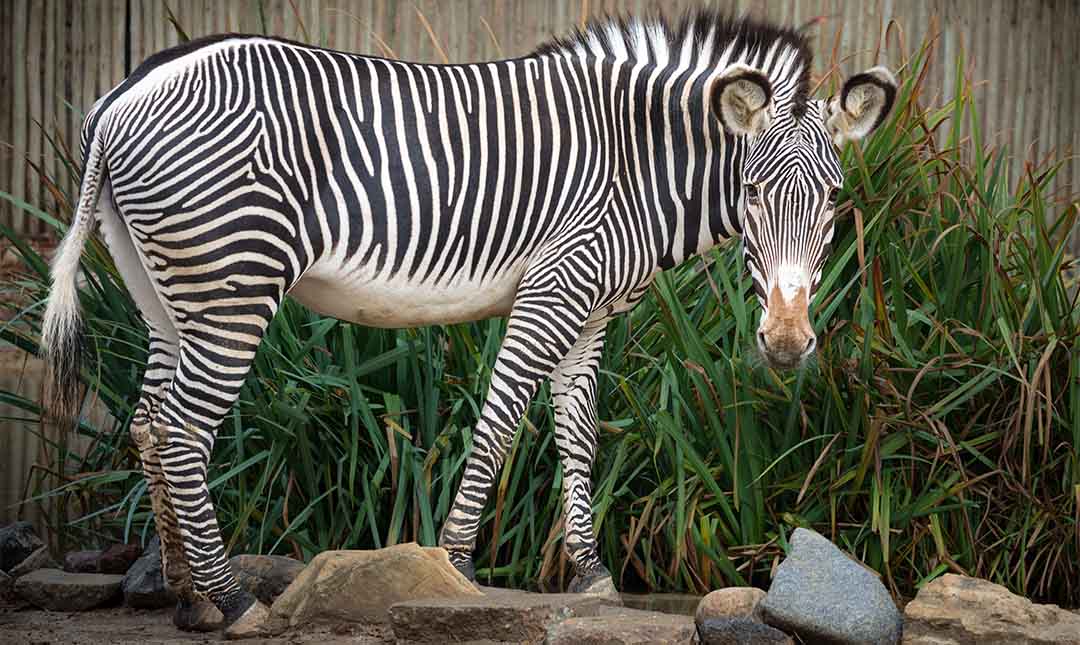About
Zebras are wild relatives of donkeys and horses. Although horses are taller, heftier, and faster, zebras have dazzling stripes and lots of attitude! The stripe pattern of each zebra is as unique as individual human fingerprints, and zebras use them to identify one another. While some think the stripes serve to camouflage individuals and confuse predators, new research shows that stripes may have evolved to keep away biting flies that carry diseases. The stripes seem to disorient the flies’ low-resolution vision and keep them from landing.
A zebra’s 340-degree peripheral vision helps them scan for predators, which include lions, hyenas, and leopards. With large ears that rotate, they are able to pinpoint the source of sounds without moving their bodies. When a threat is detected, an alarm call is given to warn the herd. While their first impulse is to run, zebras can bite and deliver deadly kicks to defend themselves. Grevy’s zebra populations have decreased by 54 percent over the last 40 years, and it is estimated that fewer than 2,000 remain. Habitat loss, unregulated hunting, diseases, and predation have contributed to this decline.
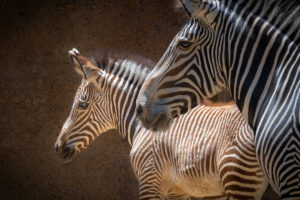



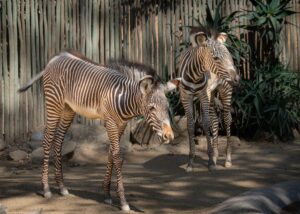
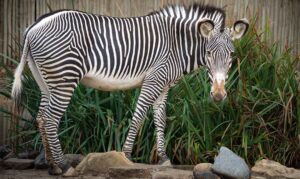
Status
Endangered; competition with livestock, reduced access to watering holes and habitat destruction all contribute to a decrease of the species. The L.A. Zoo participates in Species Survival Plan efforts to preserve the Grevy’s zebra.
Habitat
Grevy’s zebras inhabit semi-arid and open scrub grasslands of southern Ethiopia and northern Kenya.
Diet
These herbivores feed primarily on the stems and leaves of taller grasses but will browse on shrubs and trees when grass is scarce.
Physical Characteristics
The Grevy’s zebra is the largest of the three zebra species with the males five feet tall at the shoulders and weighing 770–990 pounds. Females are about 10 percent smaller. Lifespan in the wild is 12–13 years. In human care they live 22–30 years.

